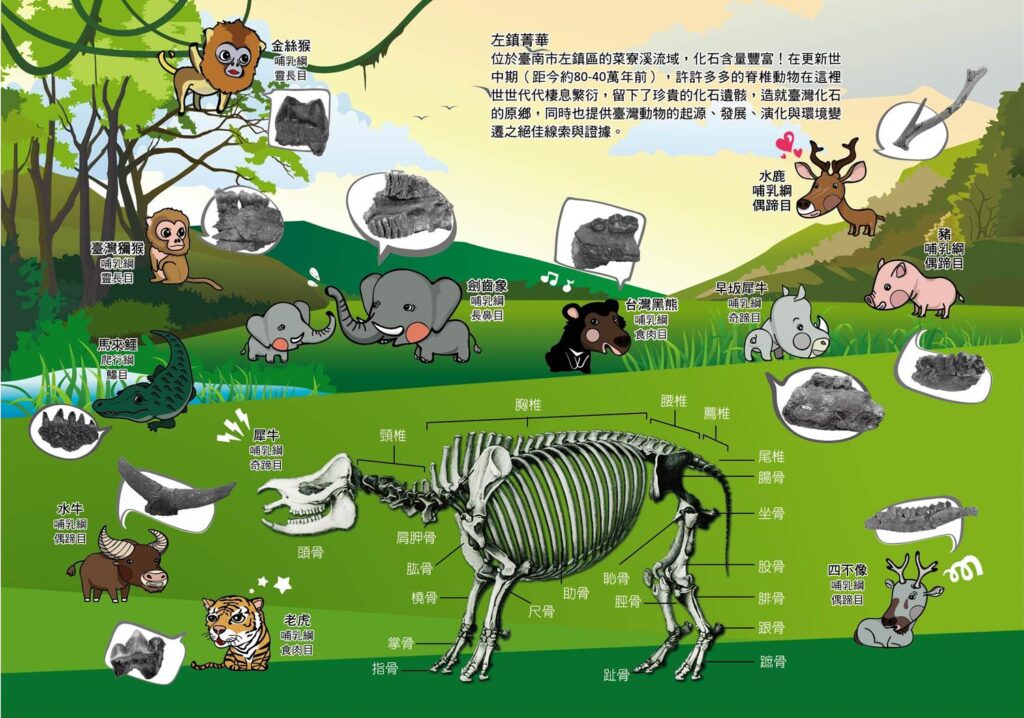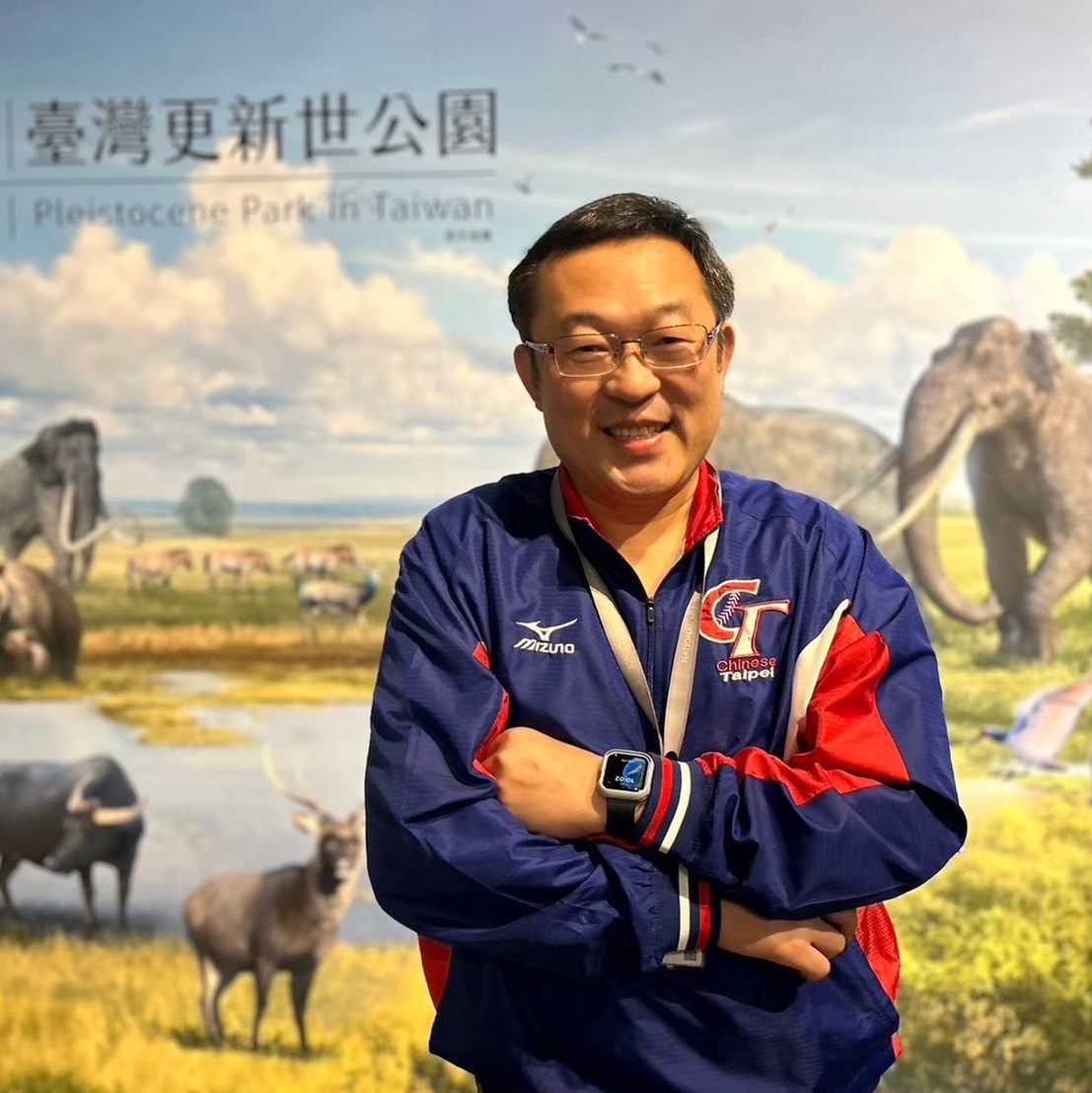Hometown of Fossils, Paradise of Animals

Located in the Cailiao River area of Zuojhen District, Tainan City, it can be called the original hometown of Taiwan's fossils and the paradise of animals. Since the Quaternary period, the rise and fall of sea level caused by the global ice age cycle, Taiwan has had the opportunity to attract many terrestrial vertebrates when it connected with Eurasia, thereby developing a diverse terrestrial ecosystem. Since the period of Japanese rule, there have been records on mammal fossils collected in the Cailiao River basin in Tainan, which started the history of research on mammal fossils in modern Taiwan. Most researchers agree that the mammal fossils in Cailiao River basin are an ancient fauna developing over a long period, and the characteristics of the mammal fossils can be traced back to the early Pleistocene about two million years ago when compared with those in China and Japan, or even back all the way to the Neolithic 20,000~30,000 years ago. Recent studies on fossil development and paleoenvironment of Nesorhinus hayasakai found in China show that it was produced in Ershuangxi Formation and dated from the middle Pleistocene between 900,000 and 450,000 years ago. At present, most paleontologists generally agree that the main mammal fauna in Cailiao River in Zuojhen area is dated from the middle Pleistocene. The main members of the "Zuojhen Fauna" include carnivorous animals such as tigers, black bears, and many small-sized carnivores, and herbivores represented by rhinoceroses, sabre-toothed elephants, deer, and buffalo, as well as Taiwan macaques and golden monkeys, featuring the characteristics of the fauna in South China. This composition of the "Zuojhen Fauna" shows the biological diversity of the ecosystem on Taiwan island in middle Pleistocene.
About Lecture

Prof. Chun-Hsiang Chang
Doctor of Paleontology at the University of London, UK, and currently a research fellow in the Geology Section of the National Museum of Natural Science, and an adjunct professor at Taiwan University and Tunghai University. He is specialized in the research on the systematic classification and evolution of Quaternary mammals, and for a long period he has been studying the Pleistocene fauna of Taiwan, especially the fossils of Zuojhen fauna and Penghu fauna. He has also actively participated in the educational promotion and exhibition planning of earth science in a number of museums.
